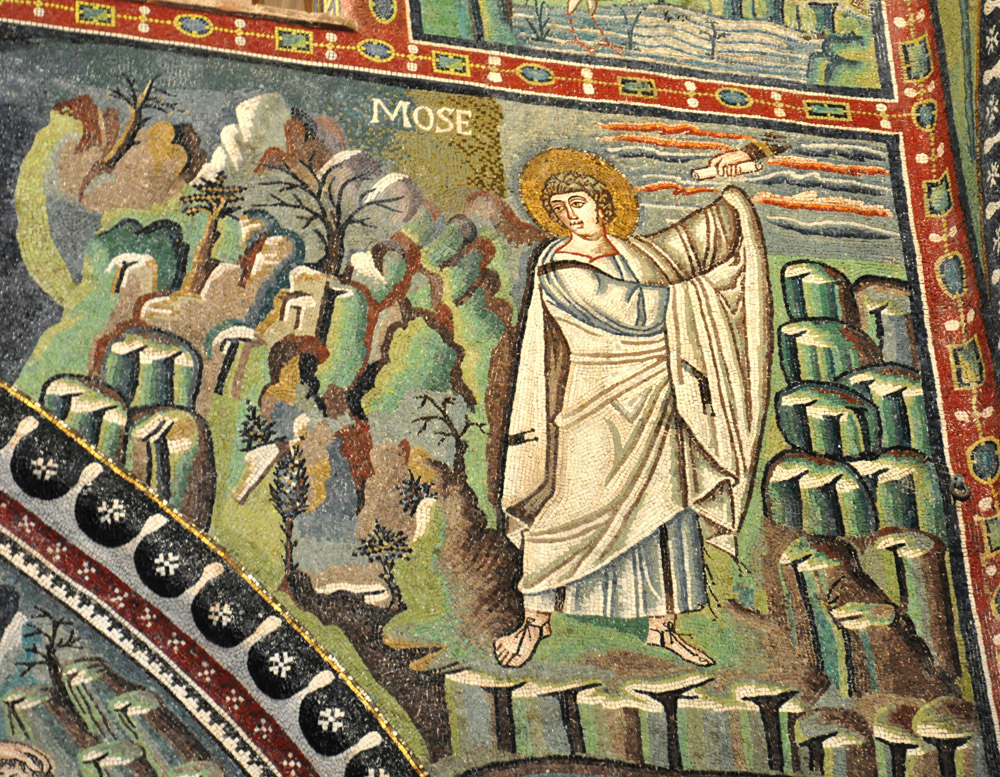Detail from the San Vitale Hospitality of Abraham: Moses

6th century
Mosaic
Basilica of San Vitale, Ravenna
In classical dress, a youthful Moses stands on a mountain and receives a scroll from the hand of God while looking down toward the part of the lunette with the sacrifice of Isaac. The scroll probably represents the commissioning of Moses to lead the Israelites out of Egypt, and thus the mountain would be Mount Horeb (Exodus 3:1-4:17). (If the scene were the giving of the Decalogue, Moses would most likely be receiving twin tablets, not a single scroll.)
In Exodus 4:6-8 God told Moses to put his hand into his "bosom" and then take it out. When he did so, the hand was "leprous as snow." Then God told him to put the hand back into his "bosom" and this time it turned back again to its normal color. This was a sign that Moses could use to convince the Israelites that he was truly sent from God. In the Vulgate the word translated "bosom" is sinus, which literally means a fold, as in a garment. In the mosaic, Moses has just withdrawn his right hand from a fold in his pallium and it is indeed leprous white.
The right hand is covered by the same fold in the pallium. This may reflect the custom in the Byzantine court of receiving a gift with the hands covered. See my page on the Presentation.
This image corresponds to the one on the wall facing it, where Moses is tending his sheep when he sees the burning bush and is told to remove his feet. On each wall Moses is paired with an Old Testament prophet, forming an image of "the law and the prophets" to which the New Testament refers eleven times.
View this image in full resolution.
View the entire mosaic.
Read more about images of Moses.
Photographed at the basilica by Richard Stracke, shared under Attribution-NonCommercial-ShareAlike license.